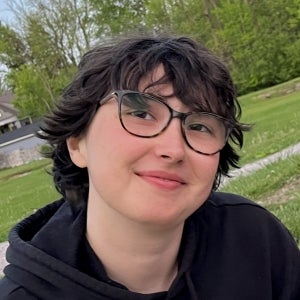I live in Baldwin this year, which has been wonderful and wonderfully frustrating in equal turns. Baldwin, for those who don't know, is the beautiful little cottage opposite the Conservatory that isn't Talcott. It's a Women and Trans* only dorm, with a Women and Trans* only safe space.
What exactly is a safe space, you ask? It's a question I've been grappling with for a couple of months now, and I'm not by any means the first person. The Multicultural Resource Centre (MRC) defines them as "spaces that are created of, by and for members of marginalised or underrepresented social groupings who share common (or similar) histories and experiences, and/or are routinely subjected to and similarly impacted by socioeconomic, cultural, political and other societal hierarchies and oppression. Safe spaces are generally identity and/or issue-experience based."
The Baldwin Lounge is one of these safe spaces, an area designed to protect a minority and facilitate discussion of issues pertinent to that minority. Other similar spaces are Afrikan Heritage House, the Edmonia Lewis Centre, Third World House, Third World Co-op and, to some extent, the MRC. These are all created and maintained by students, and students make the decisions about their boundaries and rules; the College, as far as I can tell, has practically no jurisdiction over them at all.
Let me clear up something about Baldwin before I say anything else. Baldwin is women and trans* only, but cis-gendered men (male-bodied, male identifying people) are allowed anywhere in the dorm except the Safe Space Lounge, which is currently located on the second floor though we're in the process of voting on the location right now. Cis-men can stay in any room as long as they're invited, they can sit in any lounge other than the Safe Space, and they can walk through the safe space as long as they do not sit there.
I cannot tell you how many times my male friends have thought that they can't even enter Baldwin, when in reality they can. I believe this is due to the fact that safe spaces can appear monolithic and unwelcoming, when in reality they're nothing of the sort. However, I do think there is a confusion on all sides about what a safe space actually is, and what its goals are, if they have any at all.
I met with Eric Estes, the Dean of Students and the Director of the MRC, and my friend Abby and I had a fascinating conversation with him about the various problems of defining minorities, safe spaces, and issues of inclusion and exclusion. I think the bottom line of the conversation, if there was one, was that there really is no one definition of a safe space, which is both its strength and its weakness.
In my mind, I think a safe space should have the goal of becoming obsolete. That is to say, I don't think we should be content to simply section off an area of the house for women and trans* hangout time, because I think that ignores the broader issue and the function of the space within the Oberlin community. As part of living in Baldwin you learn to be an ally to marginalised communities, and that becoming an ally is a process like any other position. This week, we're voting on whether or not to allow allies (cis-men who are supportive of feminist rights and the trans* community) into the safe space. I believe that we should; that we should be making an effort to create a space geared towards the education of those who wish to support the women and trans* community.
My reason for advocating this so strongly is because I believe that excluding cis-men as a form of security is a myth. I have met many women who are against feminism, and I have met many men who are pro-feminism. Being a member of a community does not automatically make you a supporter of their cause, and I think we're fooling ourselves, really, if we continue to make those assumptions.
That being said, no two people will have the same definition of safe space precisely because it is such an ethereal concept. And I fully accept that my idea of a safe space is not and will not be compatible with everyone in Baldwin or even everyone in Oberlin. But I do believe that, as members of a specific community, we do ourselves and everyone else a disservice if we are not open to educating others and facilitating discussion amongst anyone of any gender, color, sexuality and so on. And I think that the Baldwin Safe Space has, in some respects, closed itself off to those discussions.
I know there's a fair bit of jargon mixed around in this post, so please feel free to clarify any terms with me. I welcome you all to spare a thought for the implications and functions I've just discussed, and feel free to challenge me on anything I've said. I don't pretend to be an authority on safe spaces, and I thoroughly enjoy every discussion I have about them.


